

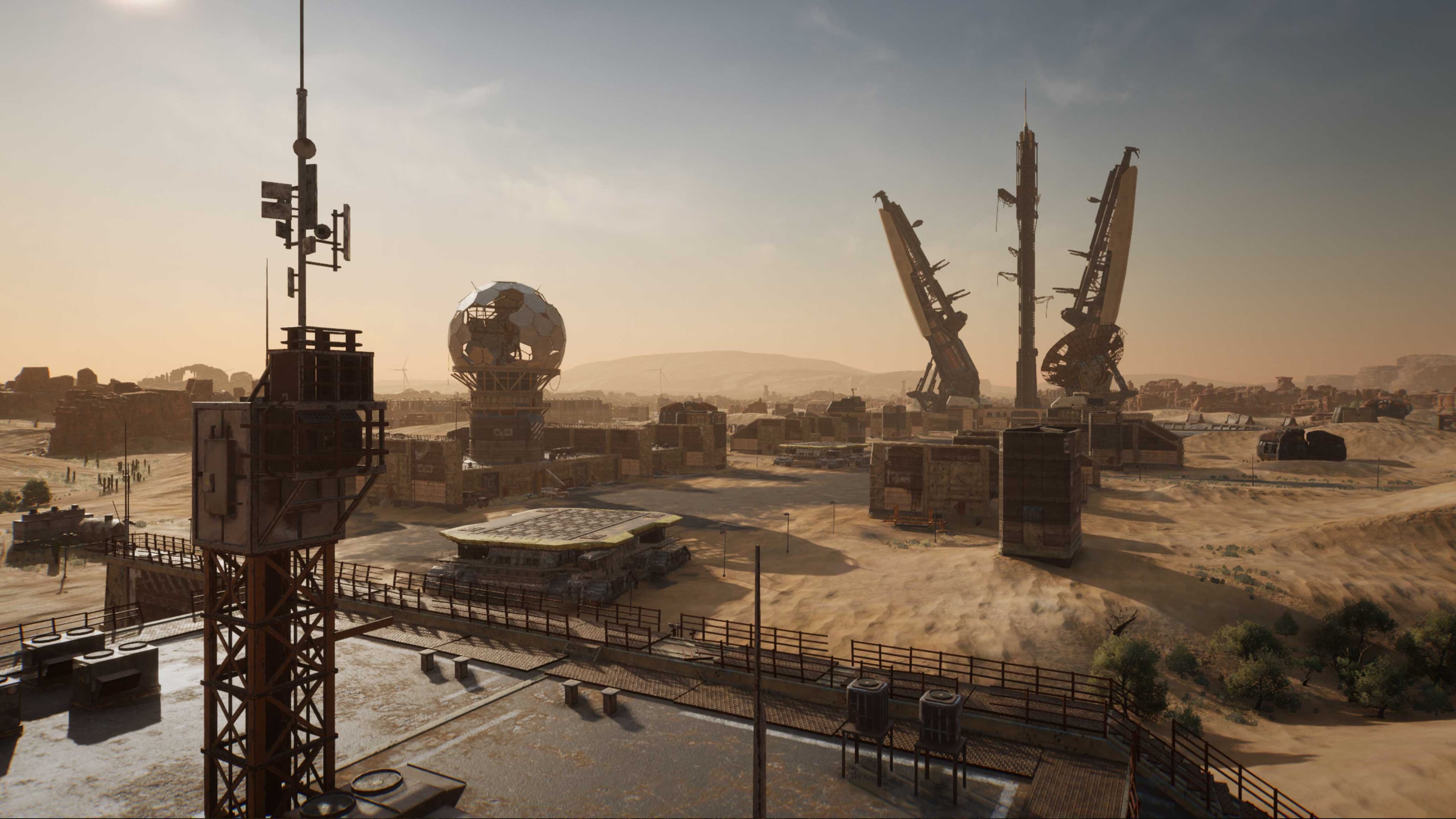
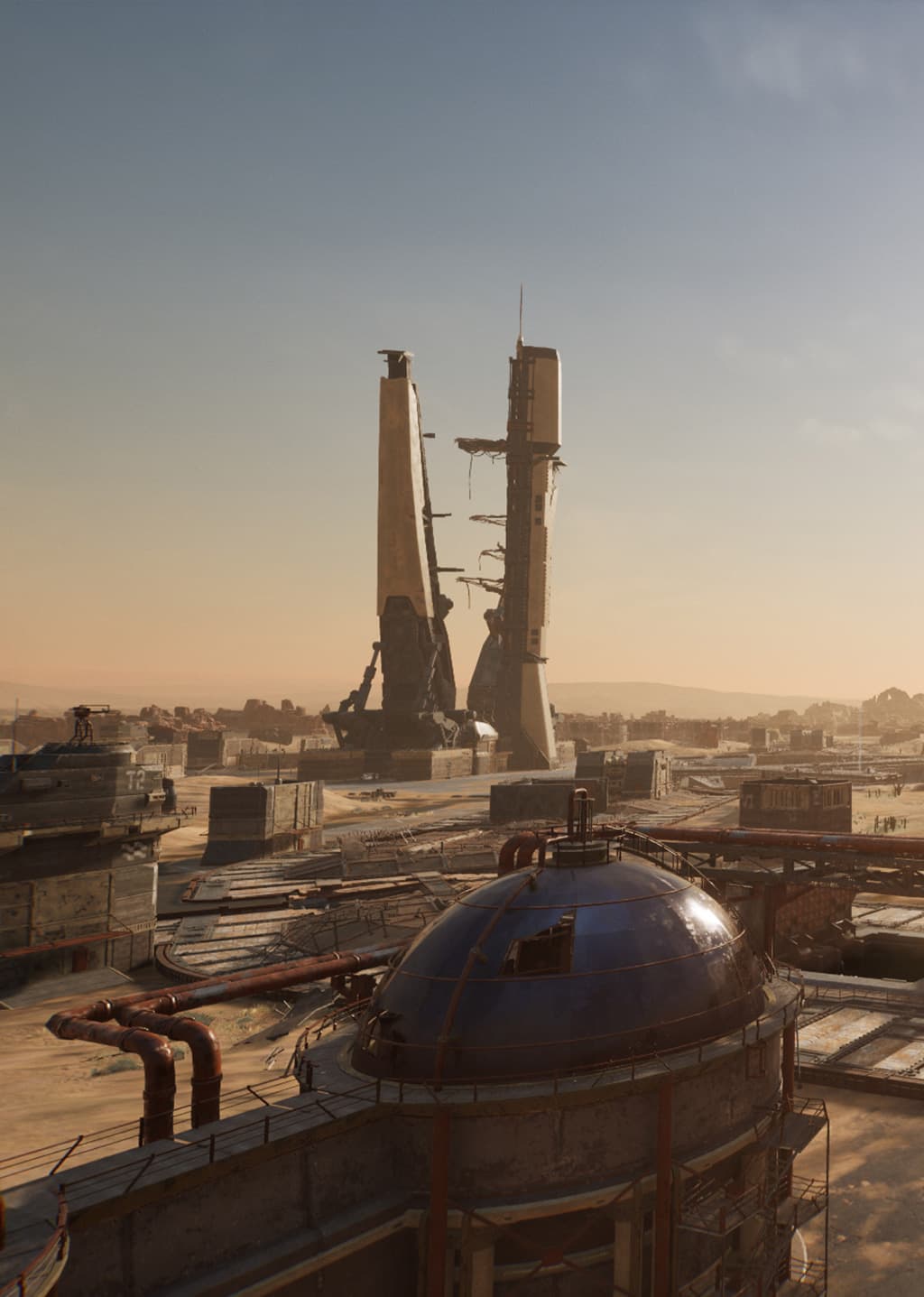
At every stage of map creation, our team's main focus is Steel Hunters' signature core gameplay. Leaning on it, our designers strive to create the most unique and visually appealing locations for you to play in. While conceptualizing our second map, Crimson Ridge, they set their gaze on the United States for inspiration again, following the well-trodden path taken with the Maryland Heights setting.
Although influenced by the same country, Crimson Ridge is nothing like Maryland Heights in terms of visuals. Upon entering the former, you're greeted by steep sandstone canyon walls and cactus-studded landscapes, surrounded by rock formations of bizarre shapes and sizes. Add to that dusty terrain with golden sand blowing off the scorched ground, all under brilliant blue skies—an enchanting sight, isn't it?
The main geographical reference source for the map's biome (overall environment and flora) was scenic American desert cliffs, wild canyons, and spectacular sandy plains. Any corner of Crimson Ridge will definitely remind you of the kinds of breathtaking views you can find in the states of Colorado, Nevada, Arizona, and Utah; in particular, such places as Red Rock Canyon National Conservation Area, Zion National Park, Monument Valley, and others have contributed to the map's vibes.
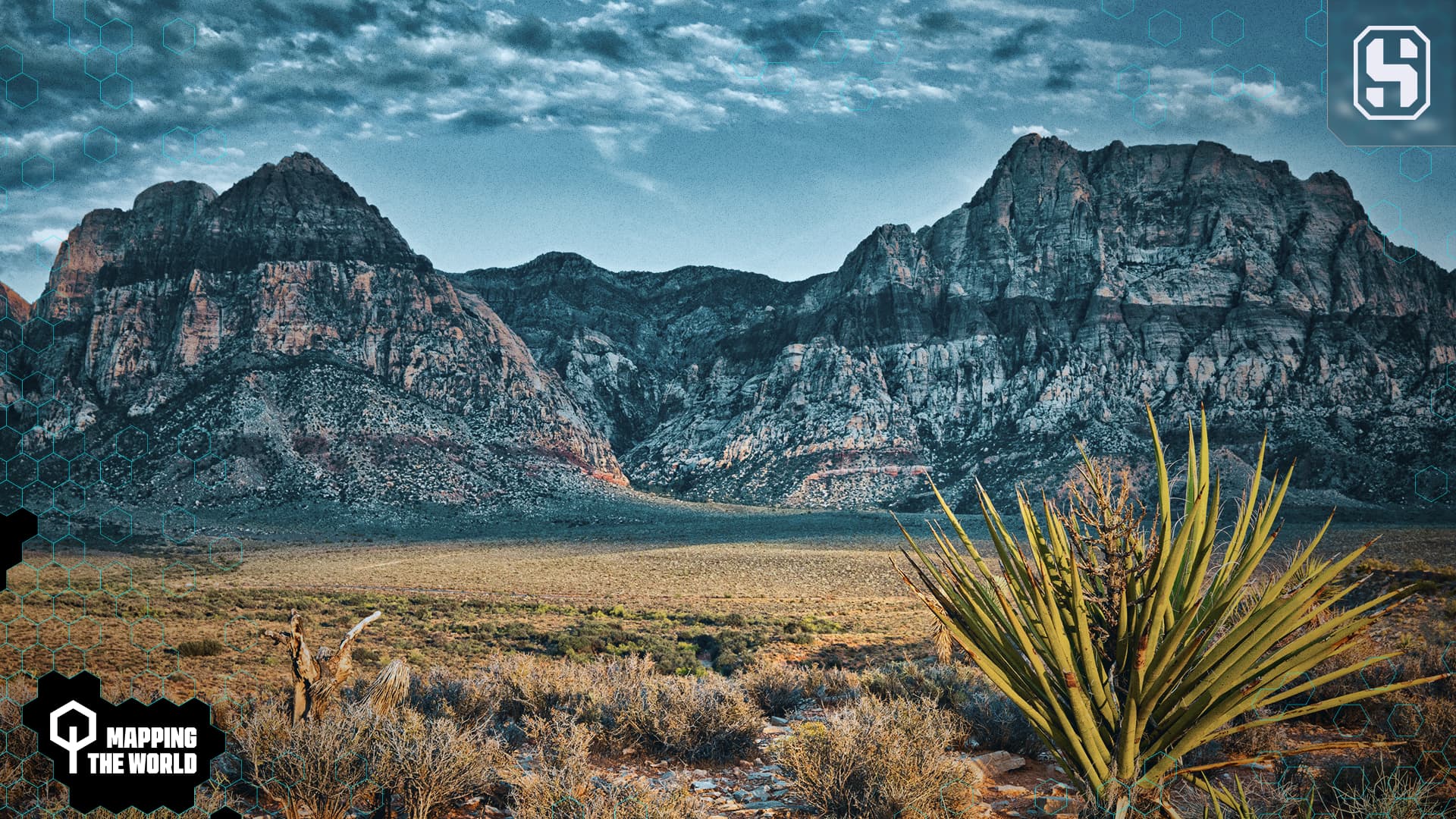
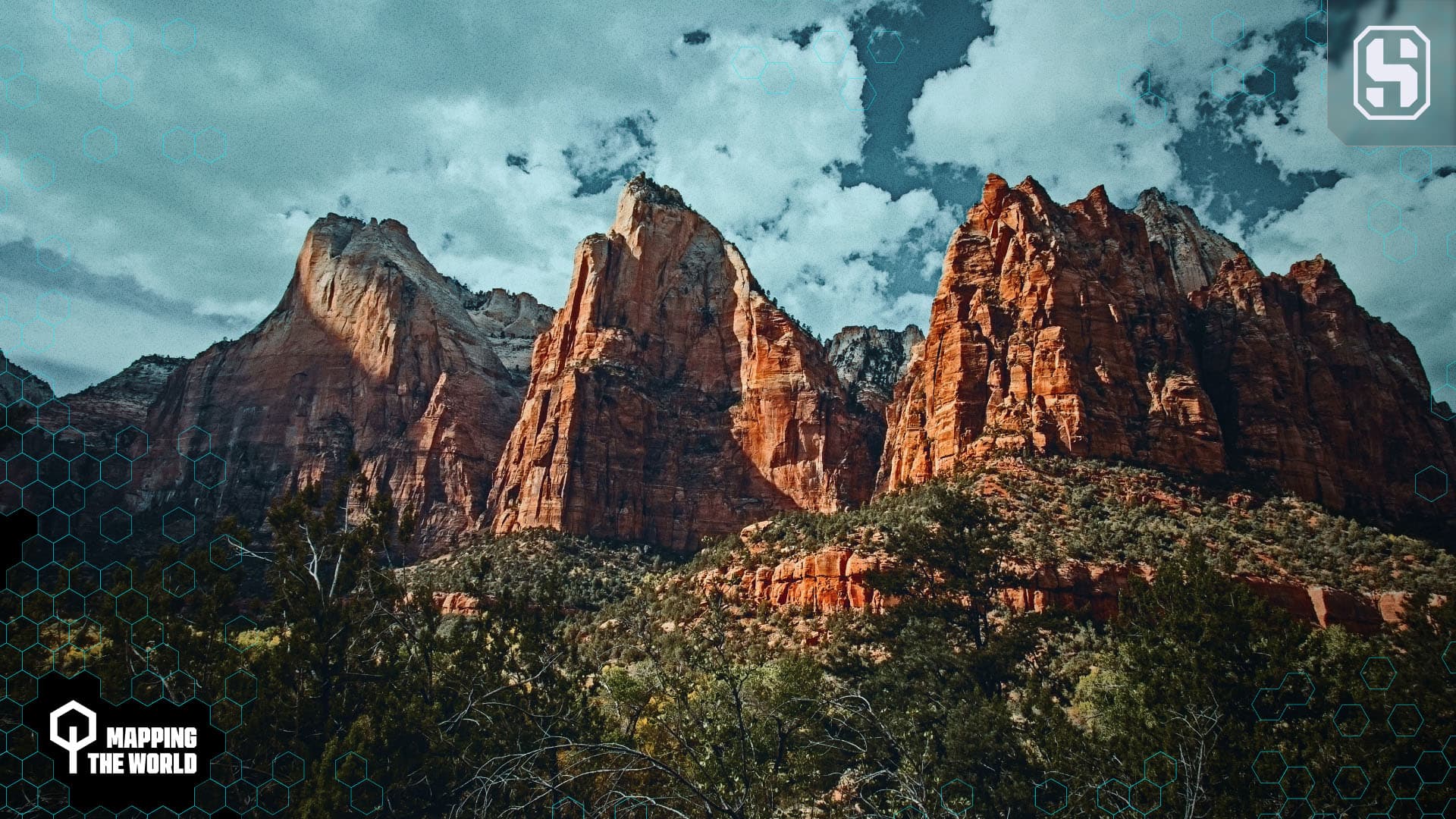
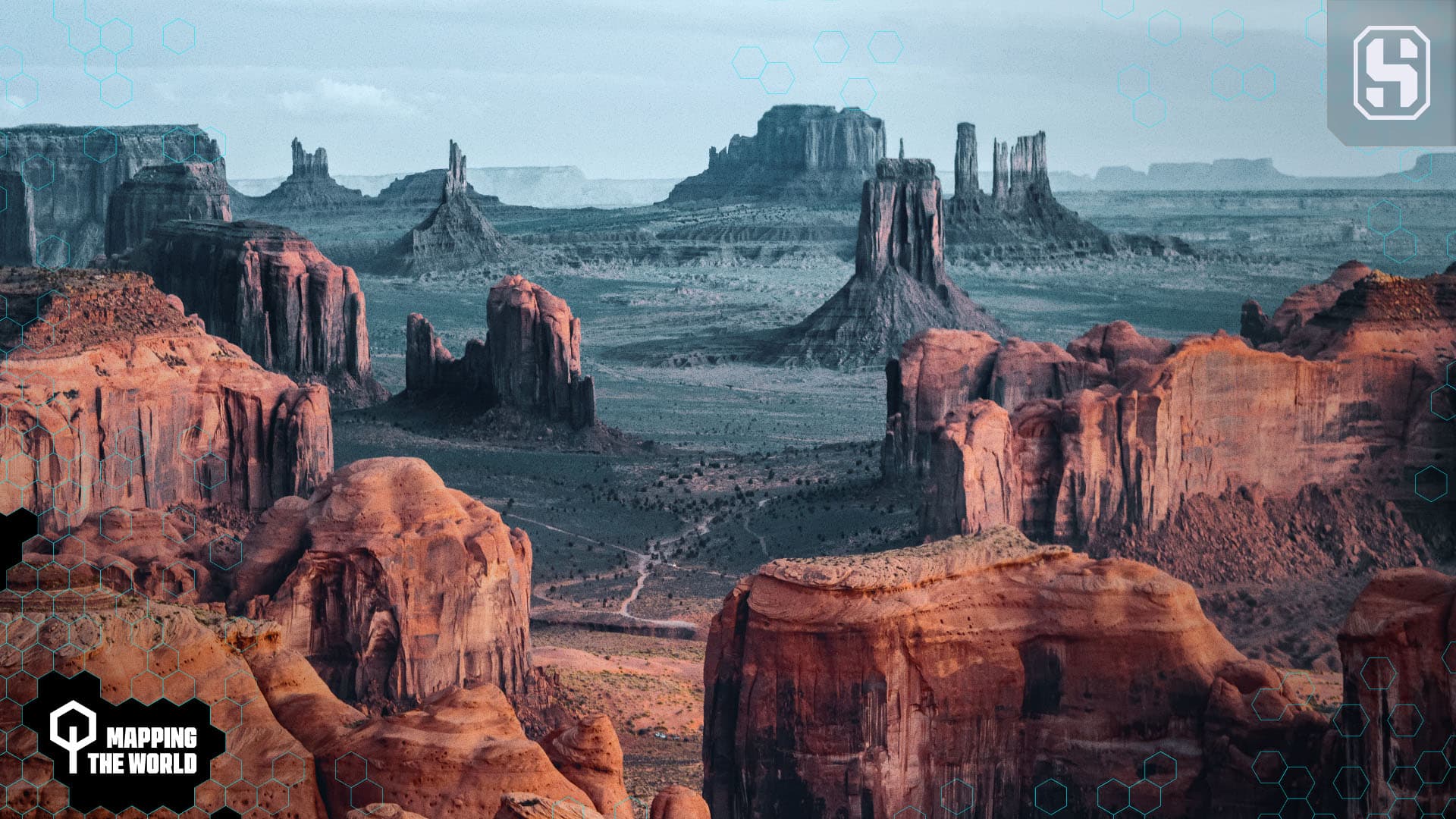
What is the ideological concept of Crimson Ridge, making up its core environment?
Well, our team's narrative idea was to bring the lore of Steel Hunters to the forefront by building objects and places directly related to the post-apocalyptic world of our game.
So, in the heart of this map, you'll see a massive rocket launch pad, from which the rescue shuttles were dispatched as part of the station resettlement program as part of the main story.
Let's get into the actual creation process of the map.
Firstly, as soon as the central idea for Crimson Ridge came from the Concept Art Team, our level designers began to construct it from a simplified scheme on a drawing board, arranging possible landmarks. Check out its fragment with the map's "before" and "after:"
Then there was the usual graybox blocking of the level routine (as mentioned in the first issue of the MTW, it's basically presenting objects in their simplest 3D form), the playtest tryouts of the rough surroundings, and creative coloring challenges for the Art Team.
The general environment creation pipeline was significantly changed, as the map dimensions were not the same (compared to Maryland Heights), and the points of interest (the game mode events) differed completely in theme and size. Subsequently, Crimson Ridge became a "breath of fresh air" and a further step in our dev progress, making it possible for the team to try out new strategies and techniques at various stages of its development.
While working on the map, our 3D Art Team had to take up the challenge of building truly enormous objects (like those at the space complex). They needed to make them visually appealing and at the same time ensure that they fit into the overall map sizes. Also, an important task was the separation of visual zones, each already filled with a number of natural objects.
The approach to landscape design and navigation was altered dramatically, too. Our designers then moved from creating large thematic zones to building local landmarks (objects of a smaller size): e.g., compare a city spread on a wide region and a distinct dinosaur statue. This made it easier to forge more detailed, authentic objects.
On the gameplay side, there were also some innovations: the desert setting included enclosed areas, tunnels, and passageways. The map thus incorporated vertical gameplay as it ensured interaction between players at different levels of a given location. It certainly brought versatility to the environment: e.g., you could fire from high ground or take cover behind rocks below. A perfect example for this is the Launch Complex area—a big circular multi-leveled platform with the Space Launch Center, Rocket Launch Pad, and Control Center. Here, the diversity of the gameplay is especially felt when you're firing from the sandy high ground while your opponent is firing back from the tunnels below.
In fact, the map was originally larger than it is now, but our team cut it down in size. This is why you can see some objects outside the map borders.
Currently, the team is brushing Crimson Ridge up and adding eye-catching visuals, as well as new locations to diversify the gameplay. For instance, a lot of effort was put into implementing sand animation and constructing a brand-new area—the Amphitheatre—and more.
As we mentioned above, the central landmark of Crimson Ridge is the Launch Complex, created for loading spaceships with thousands of settlers and launching them into orbit, according to the lore. It occupies a rather large part of the map and consists of the Launch Pad and additional tech infrastructure, like the flame trench, utilities with underground tunnels, fuel storage, etc.
When constructing this picturesque place, the team was inspired by a number of spaceports and airbases, such as: Cape Canaveral Space Force Station Launch Complex (Florida, USA), Vandenberg Space Force Base infrastructure (California, USA), the Baikonur Cosmodrome (Kazakhstan), and Groom Lake (Nevada, USA) as landscape references.
Cape Canaveral Space Force Station Launch Complex
The Baikonur Cosmodrome
Vandenberg Space Force Base
In addition to the map's compelling setting and central idea, distinctive landmarks were needed to add to environmental variety and facilitate player navigation. Typically, our designers choose real-world objects as references that are specific to the geographical location in which the map is being created. So, keeping with the Crimson Ridge's predominant desert biome, the team added campgrounds, recreation areas, trailer parks, small settlements, etc.
And, of course, the USA as the main reference is known for its rich dinosaur history, with a wealth of archaeological sites and museums dedicated to these majestic beasts. This had to be taken into account, and the map was filled with dinosaur-themed locations (e.g., the mascot statue, the "Dino Cave" zone, "DinoLand" amusement park, etc.
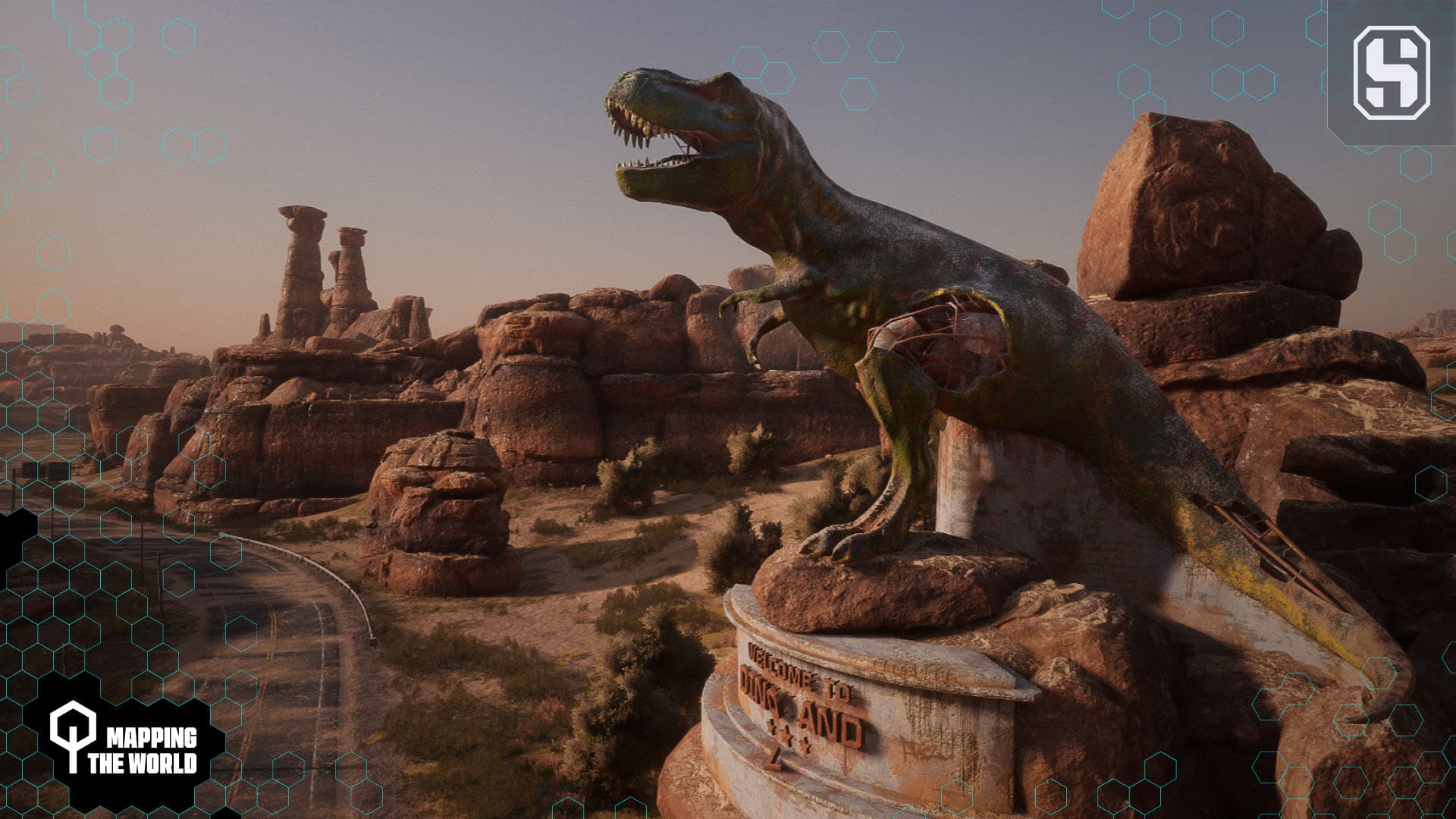
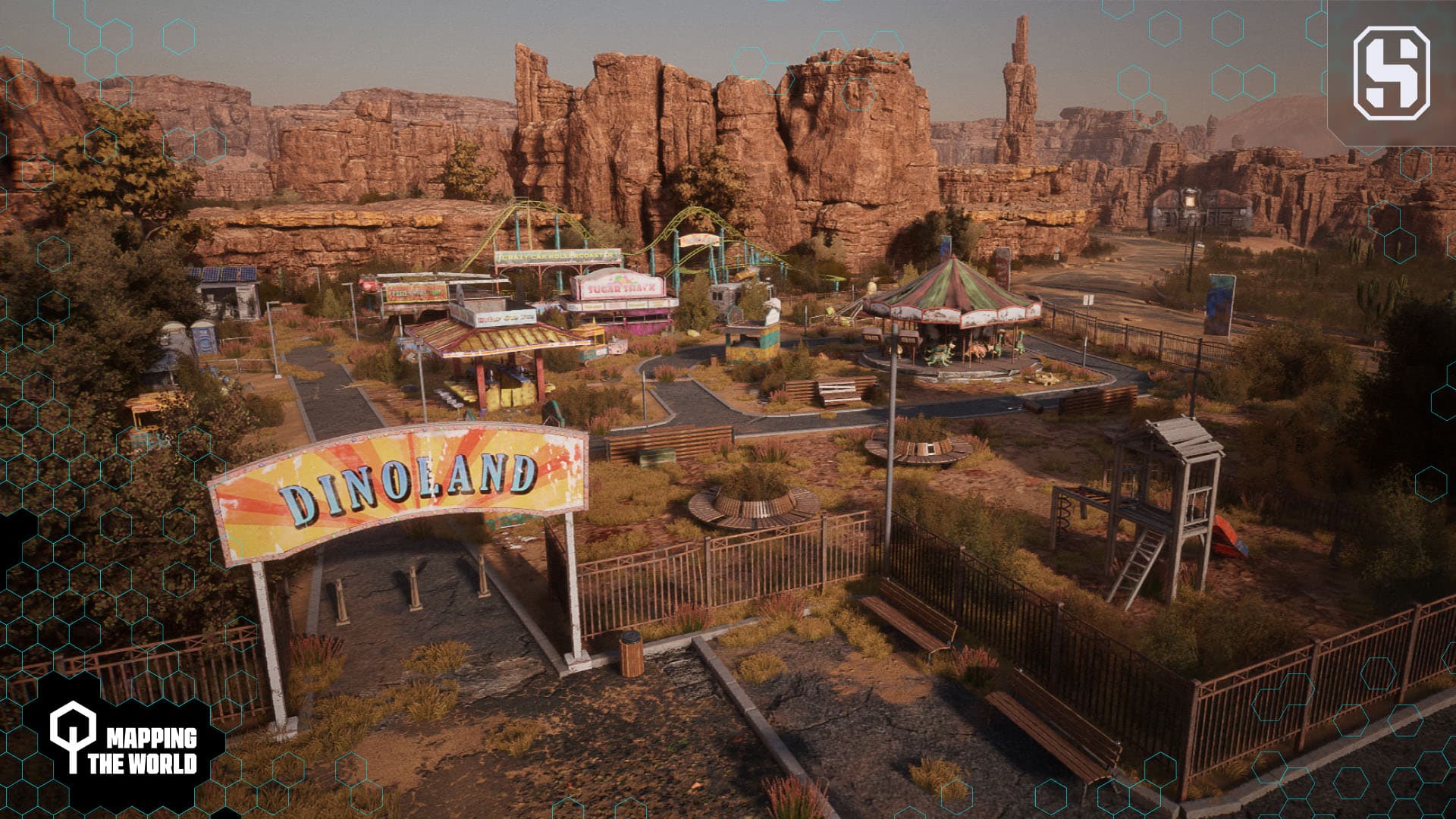
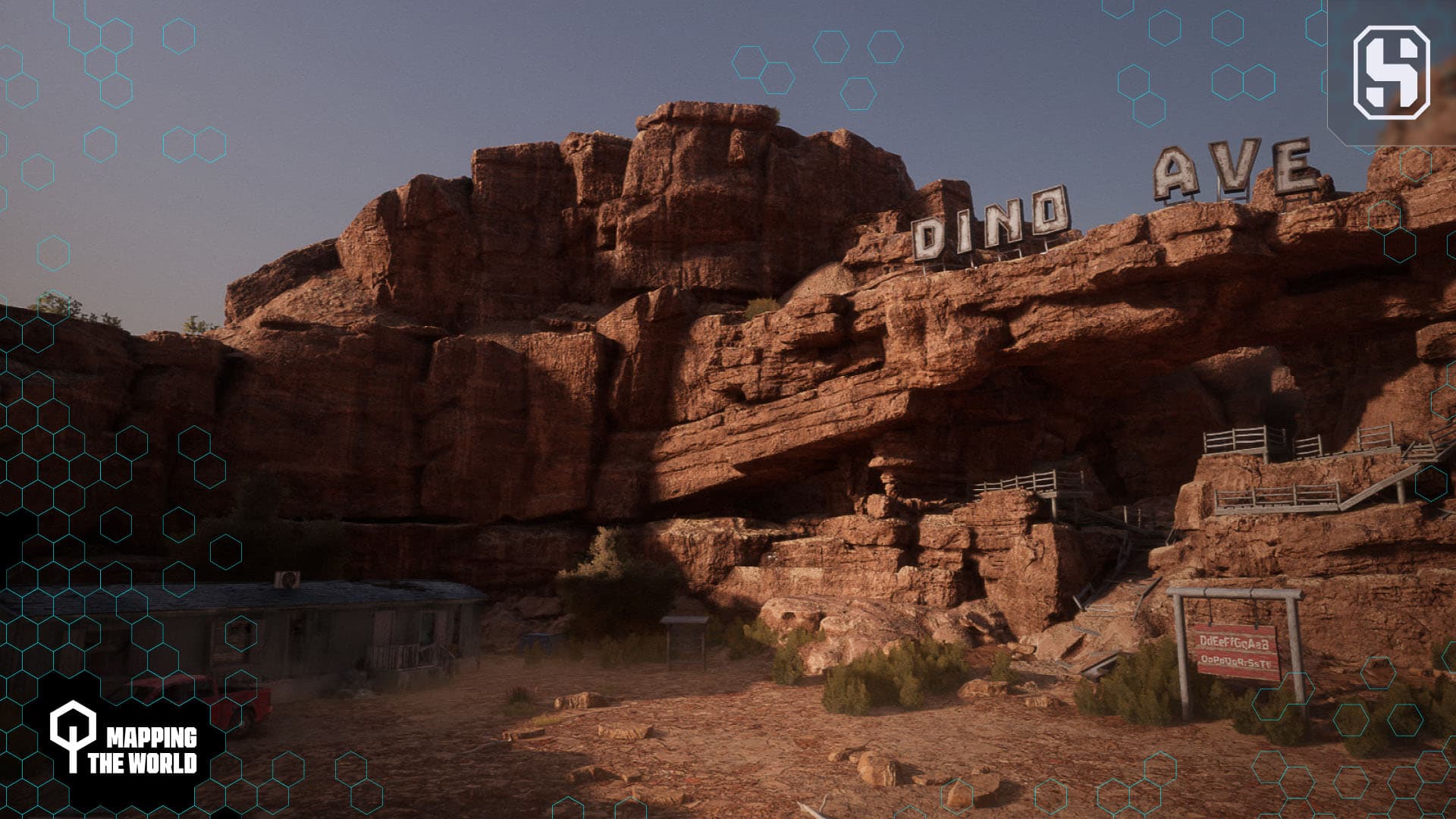
Of course, all the map locations that you wander through represent artists' creative interpretations of reality. Even with the real-world references' impact, much of what you see is created in the minds of the team.
Every day, its members are engaged in creative and strenuous work, immersed in the construction of massive objects, such as the Rocket Launch Pad, to small ones, such as the billboards and Easter eggs that are yet to be discovered by all of you.
This was the first map where the curtain to our game's lore was lifted, as it comprises many more sights directly related to the world of Steel Hunters than there were in Maryland Heights. We'll continue to push this development direction, adding more lore elements and diving deeper into the post-apocalyptic atmosphere than ever before.